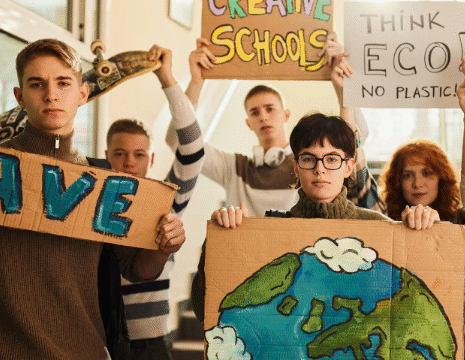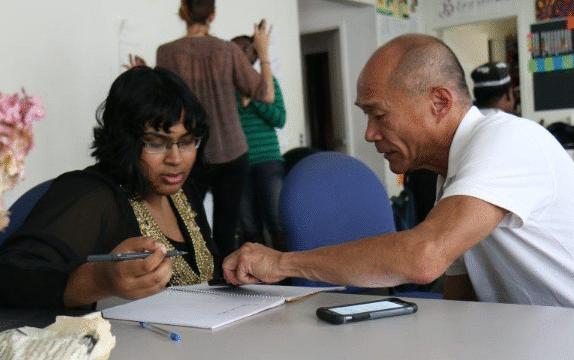Education is often described as the most powerful tool for shaping
the future. Around the world, millions of children and young
adults dream of going to school, learning new skills, and
building brighter futures. Yet, many face obstacles such as lack of funding, limited resources, or geographical barriers. Crowdfunding has emerged as a modern way to bridge these gaps. By pooling small contributions from many people, it has become possible to turn ambitious educational dreams into achievable realities.
The beauty of crowdfunding lies in its simplicity. A teacher in a rural village can create an online campaign to raise money for school supplies. A nonprofit organization can appeal to supporters to help fund scholarships. A group of university students with an innovative idea can seek help to bring their project to life. All it takes is a story that resonates with others and a platform that connects projects with potential donors.
One of the reasons crowdfunding has become so effective in education is its ability to reach a global audience. In the past, schools relied on local donations or government support, which were often limited. Today, with the help of the internet, a classroom in Kenya can receive support from someone in Canada, or a literacy project in Cambodia can find backers from across Europe. This interconnectedness makes it possible for educational initiatives, no matter how small or remote, to be seen and supported by people who care about learning and opportunity.
For families and communities, the impact can be life-changing. Imagine a small school in a rural area struggling to afford books, chalkboards, or desks. Traditional funding channels might take years to deliver aid. With crowdfunding, teachers and parents can raise the needed funds within weeks, allowing children to study in better conditions almost immediately. Beyond physical resources, crowdfunding has also supported digital tools, internet access, and teacher training, ensuring that education keeps pace with the needs of the modern world.
Another strength of crowdfunding is the sense of personal connection it creates between donors and recipients. Unlike large, impersonal donations to broad organizations, crowdfunding often tells individual stories. A campaign might introduce a specific student who wants to study engineering but lacks tuition fees, or a teacher who has developed a creative new curriculum. Donors feel directly involved in someone’s journey, and this emotional connection inspires generosity. Many people contribute not only because they want to help but also because they feel part of the story.
Of course, crowdfunding is not only for small projects. Large-scale initiatives have also been launched this way. Universities have used crowdfunding to fund research, develop new technologies, or expand community outreach. Nonprofits have raised money for country-wide literacy drives, teacher training programs, and the construction of new schools. What unites these efforts is the idea that many small contributions, when combined, can make a major difference.
The global aspect of crowdfunding also promotes cultural exchange and awareness. A student in one country might learn about the struggles of learners in another and feel motivated to help. This process builds empathy and shows how interconnected the world of education truly is. It reminds us that knowledge has no borders, and helping one child succeed can have ripple effects far beyond one community.
While the potential of crowdfunding is enormous, it also comes with challenges. Campaigns need visibility, clear goals, and transparency to gain trust. Donors want to know that their contributions will be used wisely and that the projects they support are sustainable. Successful campaigns often provide updates, share photos or stories, and show the tangible results of donations. This communication builds credibility and encourages more people to give.
Technology plays a big role in making crowdfunding effective. Platforms designed specifically for education allow projects to be easily shared on social media, reaching thousands of people in a short time. Video storytelling has become especially powerful. A heartfelt video showing students, classrooms, and communities helps potential supporters understand the real need and the real impact of their contribution. The ability to donate securely and conveniently online further removes barriers and makes global participation possible.
For educators, students, and organizations considering crowdfunding, the key is authenticity. People respond to honesty and passion. A campaign that clearly explains why support is needed, what the funds will be used for, and how success will be measured is more likely to succeed. It is not about having the flashiest presentation but about building trust and showing the true value of education.
Crowdfunding also inspires innovation. Some campaigns go beyond simple fundraising and invite donors to participate in creative ways. For example, contributors may be offered opportunities to join virtual discussions with students, receive updates on the progress of projects, or even be recognized in school projects. These gestures create stronger bonds and remind donors that their contributions are deeply valued.
On a larger scale, crowdfunding for education is also reshaping how people think about responsibility. Instead of relying only on governments or large institutions, individuals now see that they can play a role in supporting education globally. This sense of shared responsibility can be empowering. It allows people who may not have enormous wealth to make a real difference by joining forces with others.
The future of crowdfunding in education looks bright. As more people become aware of its potential, and as technology continues to evolve, we can expect to see even more creative and impactful campaigns. Imagine virtual reality tools allowing donors to step into classrooms across the globe, or AI-driven platforms that connect donors with projects that match their interests. These innovations could further strengthen the bridge between communities in need and people willing to help.
At its heart, crowdfunding is about more than raising money. It is about hope, connection, and the belief that education should be accessible to everyone, everywhere. Each campaign tells a story of resilience and aspiration, reminding us that with enough support, barriers can be overcome. When a community rallies around a project, it is not just about providing resources but about sending a message that education matters and that no dream is too small to pursue.
Around the globe, countless students are waiting for opportunities that could change their lives. Crowdfunding is one way to ensure that those opportunities are not limited by geography, wealth, or circumstance. Whether it is a new library in a remote town, scholarships for aspiring scientists, or digital resources for underserved schools, each initiative contributes to a larger vision of a world where learning is for everyone.
By supporting educational projects through crowdfunding, people everywhere can join a movement that is reshaping the future. Together, small acts of generosity become powerful waves of change, opening doors to knowledge and possibility. And in doing so, we affirm a timeless truth: when we invest in education, we invest in the future of humanity.






